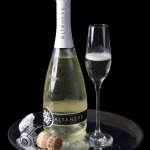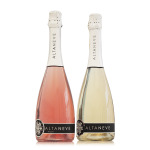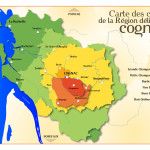A distinctive product deals with marketing challenges
Sparkling Wine in the US has grown twice as fast as the overall wine category over the past five years. Within sparkling wine, the non-champagne segment accounts for over 90% of sales (See earlier post on Booze Business) with prosecco leading the charge.
In fact, in a recent article in Shanken News Daily:
“The Prosecco DOC Consortium recorded a 34% increase in exports to the U.S. market in the first half of 2014, with volume reaching 1.27 million cases.”
In effect, prosecco has challenged champagne for the top of the sparkling wine domain. In so doing, prosecco has changed the occasions for drinking sparkling wine. While champagne is for celebrations and special occasions, prosecco is for everyday and any time. Further, at $12 to $15 per bottle, prosecco has an advantage for everyday use.
But, just as there are $12 bottles of wine as wells as $20, $30 even $40 still wines, can an upmarket prosecco capture a significant share of that market?
Enter David Noto with Altaneve Prosecco

It’s quite an interesting story. David’s family has been making wine for 10 generations in Italy and he grew up with a passion for prosecco, particularly the high quality end. So he changed his career from engineering and finance technology and brought this product to market a few years ago.
According to David, “The US market is not deeply familiar with the broad range of prosecco, so we felt it was time to introduce the best.”
In addition, the brand has an interesting story to tell. Altaneve means high snow in Italian and is a reference to the snow capped peaks of the Dolomite Mountains that can be seen from the vineyards in Valdobbiadene where the prosecco is produced. The production facility is the second oldest in the town where the production of prosecco dates back to 200 BC.
In short, Altaneve has it all, provenance, terroir, heritage and high quality. Taste? I’m a huge prosecco fan and, while I’m far from a connoisseur, I think it’s the best tasting prosecco I’ve ever had. It’s versatile (any occasion with or without food), and unlike other

prosecco I’ve had, it’s consistent from bottle to bottle.
Altaneve sells for roughly $29.99 a bottle and therein is the problem.
The marketing challenge
I suppose it’s because the prosecco category in the US market is still in its infancy. Or, maybe the current image for the category is that it is generally low in price. As a result, David faces an uphill battle getting the message across that high end prosecco is worth the price. After all, all wine categories segment by price, why not this one?
I can understand the consumer reluctance to trade up. The category is still evolving and they came to it originally for an inexpensive alternative to champagne, so why pay for top shelf. That perception will change gradually over time but for producers like David Noto, accelerating a change in perception will take marketing muscle and lots of money. Altaneve is a startup brand.
The hesitation by the trade (especially bars and restaurants) is baffling to me. The mark up and profitability from Altaneve would make the brand more than worthwhile. Yet, the reluctance to change, to accept a segmentation of the prosecco category, not to mention lack of knowledge, all make it an uphill battle. To me, it defies logic.
 I guess the bright side is twofold. First, slowly but surely, better retailers like Sherry Lehmann and important chains like Capital Grille are stocking Altaneve. Then there is David Noto himself. If you’re a follower of this blog, you know I often write about startups and the entrepreneurs behind them. Add David Noto to the list of passionate, smart and committed.
I guess the bright side is twofold. First, slowly but surely, better retailers like Sherry Lehmann and important chains like Capital Grille are stocking Altaneve. Then there is David Noto himself. If you’re a follower of this blog, you know I often write about startups and the entrepreneurs behind them. Add David Noto to the list of passionate, smart and committed.
As to the Altaneve product itself, try it and let me know what you think. Unfortunately, it currently is only available in NY, NJ and CT, but also online. I’m betting you’re going to love it.
While you’re at it, check out what Wine Spectator had to say about Altaneve, as well as other info from their Facebook page.



